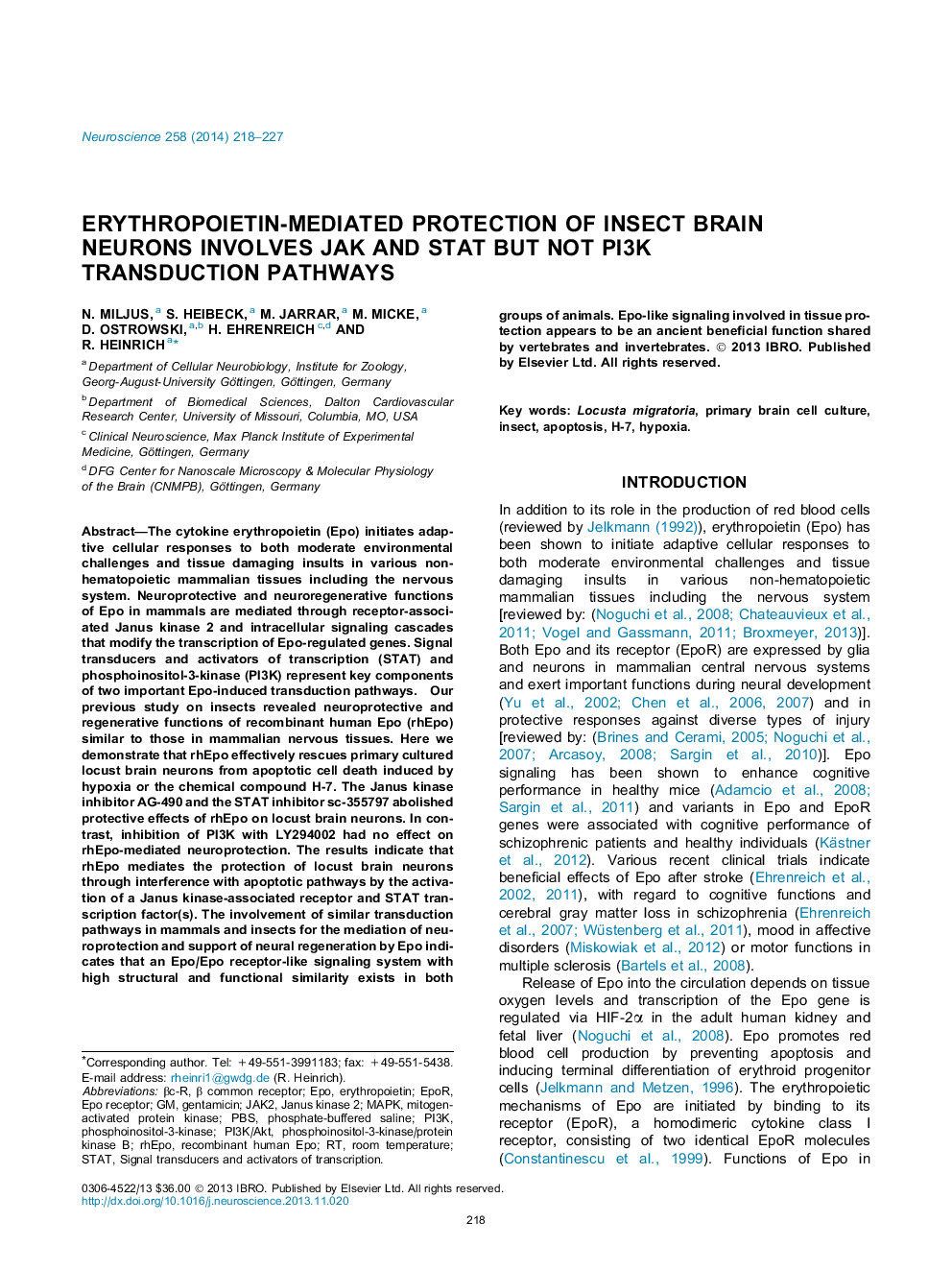| Article ID | Journal | Published Year | Pages | File Type |
|---|---|---|---|---|
| 4337785 | Neuroscience | 2014 | 10 Pages |
•Hypoxia and H-7 stimulate apoptotis in primary cultured locust brain neurons.•Apoptotic cell death is prevented by human recombinant erythropoietin.•Erythropoietin mediates neuroprotection through a janus kinase-associated receptor.•Neuroprotection depends on the activation of STAT transcription factors.•Neuroprotection is independent of PI3K signaling.
The cytokine erythropoietin (Epo) initiates adaptive cellular responses to both moderate environmental challenges and tissue damaging insults in various non-hematopoietic mammalian tissues including the nervous system. Neuroprotective and neuroregenerative functions of Epo in mammals are mediated through receptor-associated Janus kinase 2 and intracellular signaling cascades that modify the transcription of Epo-regulated genes. Signal transducers and activators of transcription (STAT) and phosphoinositol-3-kinase (PI3K) represent key components of two important Epo-induced transduction pathways.Our previous study on insects revealed neuroprotective and regenerative functions of recombinant human Epo (rhEpo) similar to those in mammalian nervous tissues. Here we demonstrate that rhEpo effectively rescues primary cultured locust brain neurons from apoptotic cell death induced by hypoxia or the chemical compound H-7. The Janus kinase inhibitor AG-490 and the STAT inhibitor sc-355797 abolished protective effects of rhEpo on locust brain neurons. In contrast, inhibition of PI3K with LY294002 had no effect on rhEpo-mediated neuroprotection. The results indicate that rhEpo mediates the protection of locust brain neurons through interference with apoptotic pathways by the activation of a Janus kinase-associated receptor and STAT transcription factor(s). The involvement of similar transduction pathways in mammals and insects for the mediation of neuroprotection and support of neural regeneration by Epo indicates that an Epo/Epo receptor-like signaling system with high structural and functional similarity exists in both groups of animals. Epo-like signaling involved in tissue protection appears to be an ancient beneficial function shared by vertebrates and invertebrates.
Graphical abstractFigure optionsDownload full-size imageDownload high-quality image (105 K)Download as PowerPoint slide
